Picking a toilet is not an easy thing to do. You should think about the color, cost, as well as mechanisms. When it comes to flushing systems, there are two types of toilets available: siphonic and washdown.
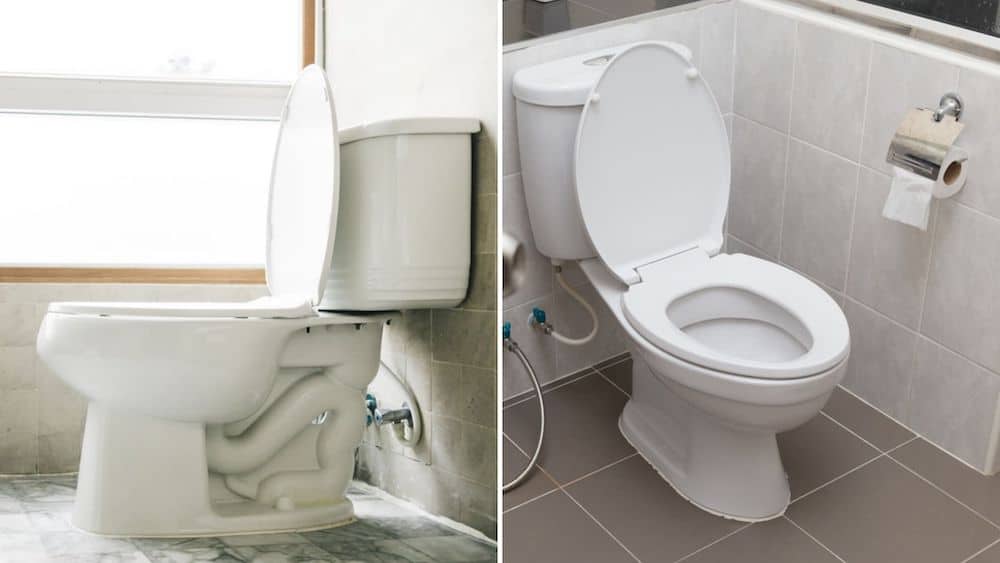
Is a siphonic toilet better than a washdown toilet, or vice versa? It is hard to give a single clear-cut answer.
In short, siphonic toilets are quieter, have longer trapways, leave fewer smears and odors, and save more water. However, washdown toilets are easy to maintain, less prone to clogs, and take less space.
Siphonic toilets and washdown toilets make use of different mechanisms. To better know the differences between these two types, I recommend you read on.
What is a siphonic toilet?
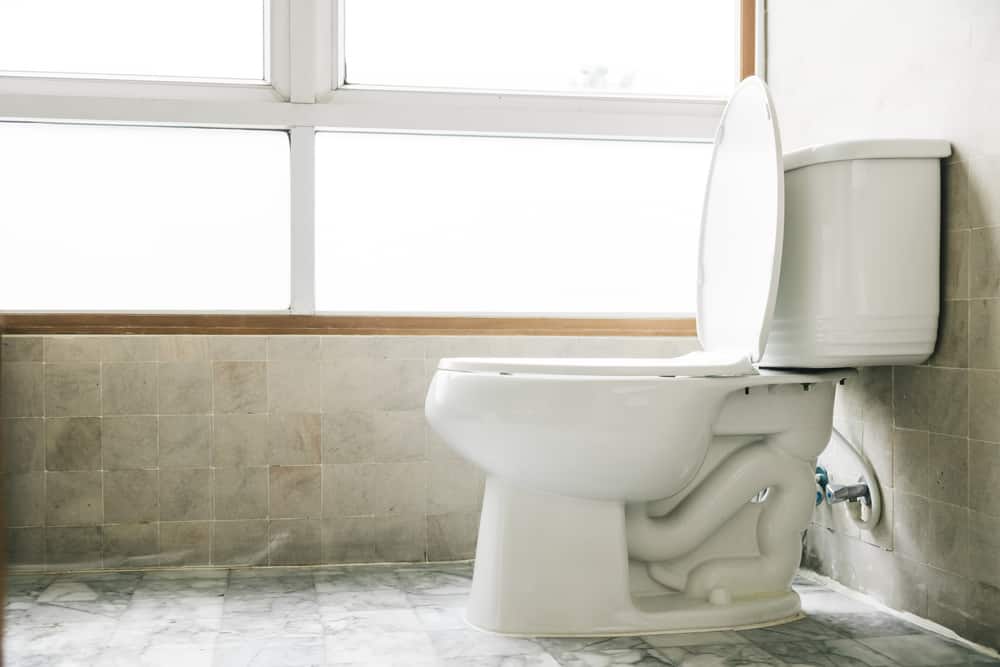
The siphonic toilet refers to the toilet that has a siphonic flush system. You can identify them quickly by checking if there is a “P” shape or “S” shape trapway under the bowl. It is common in the US but rare in European countries and Australia.
Some one-piece toilets have a hidden trapway. In this case, you may need to consult the seller or manufacturer.
How does a siphonic toilet work?
Siphonic toilets have longer and bent trapways. This trapway is specified designed to form a siphonic action, and the bowl outlet is narrow.
When you flush the toilet, the flapper is lifted, and the water in the tank gets released.
This water runs into the flush ring rapidly. A part of it will get into the bowl, and another will go to the siphon jet under the outlet.
The water coming out from the siphon jet, along with the one in the bowl, will push the waste you just produced to go through the trapway and get into the sewer pipe.
As the speed of water going to the trapway exceeds the one exiting from the trapway, thanks to the narrow and longer trapway, it will form a vacuum and suck the waste out just like a vacuum cleaner.
The Inverted U-shape part of the trapway will form a siphon naturally, letting the water step over the weir and take away the waste together. It will not take any electricity to accomplish this process.
Next, the vacuum will break, and the remaining water will go back to the bowl a bit. As the weir is high in the trapway, you can find American toilets have a higher water level. It will not only become a seal to prevent sewer gases from flying back to the toilet but reduce the odors released from your poop.
Pros and cons of siphonic toilets
Pros
- Lower likelihood of smear problems.
- Prevent sewer gases from escaping.
- Quiet flush.
Cons
- More prone to clogs.
- The toilet will take more space.
What is a washdown toilet?
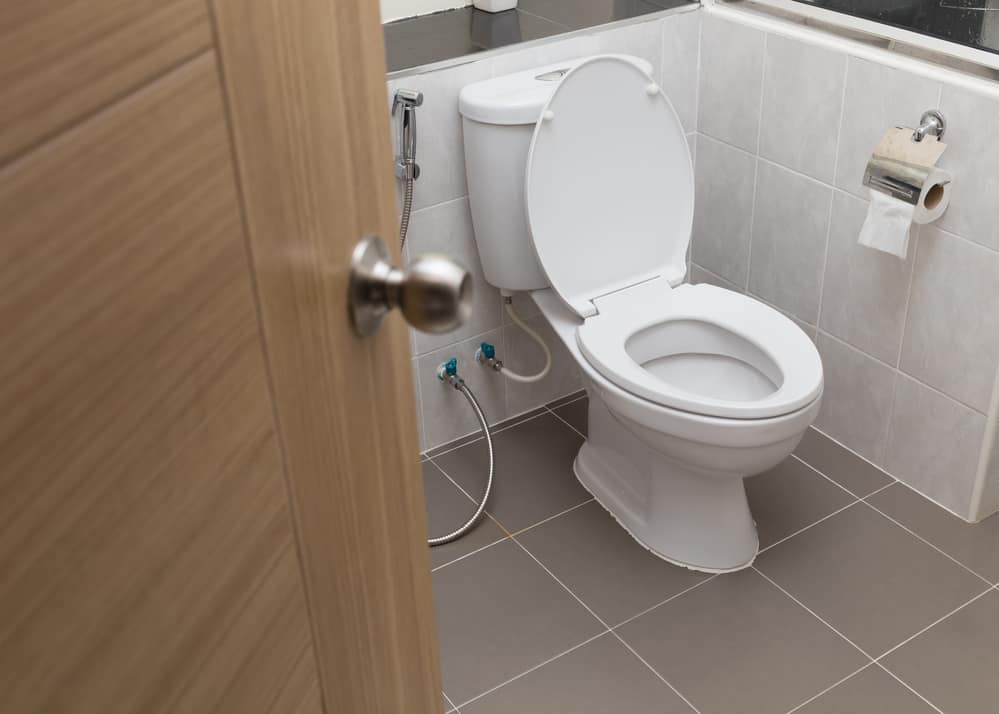
The washdown toilet is a common type of toilet in Europe and Australia. It takes advantage of the pushing power of the water coming out from the tank to flush out all the solid waste and liquid waste.
Washdown toilets have shorter and straighter trapways, which you can distinguish from others quickly. Another way to identify it is by comparing the bowl outlet hole. Usually, a washdown toilet has a bigger outlet hole than siphonic units.
How does a washdown toilet work?
When you push the flush button or pull the lever, water will gush out from the tank rest on the toilet bowl. This process will create a force due to the water weight and gravitational flow, enabling the water to wash away all the urine and poop.
To make it easier, the trapway of washdown toilets is much wider and shorter than the ones in siphonic toilets. Usually, the trapway is about 4 inches wide, but the siphonic toilet trapway is only 2 inches wide.
Meanwhile, the weir in the trapway is much lower, making the water level in the bowl under the outlet rim.
You don’t have to deal with many clogs while using a washdown toilet. However, it could bring more odors to your bathroom and make loud noise while flushing.
Pros and cons of washdown toilets
Pros
- It is compact.
- Fewer clog issues.
- Easy to maintain.
- Save more water.
Cons
- More prone to smears.
- Produce more odors.
- Loud flush.
- More splashback due to the low water level.
Siphonic vs. washdown toilet: compare from different aspects
Now that you have a general understanding of these two types of toilets. This section will compare them in detail to help you narrow down the options and make a sensible decision.
| Aspects | Siphonic Toilets | Washdown Toilets |
| Cost | Higher | Lower |
| Bowl size | Large | Small |
| Water usage | More | Less |
| Odor control | Great | Not ideal |
| Easy to clean | Yes | No |
| Clog | Prone to clog | Clog-free |
| Noise | Quiet | Loud |
Cost
You can find both cheap and expensive ones in each category. Generally speaking, siphonic toilets tend to have a higher price tag. It may be due to its complex construction and more materials used.
Washdown toilets can be pricey. For example, if you want to improve the flush efficiency, you should opt for a toilet with a nano glaze bowl which will cost more.
Nevertheless, if you are on a tight budget, a washdown toilet is the one to go, even though I know Americans will always stick to siphonic units.
Bowl size
Siphonic toilets have a longer and bent trapway. To accommodate the trapway, the toilet bowl should be larger accordingly. Simultaneously, siphonic toilets have a larger water tank to create a more powerful flush.
Washdown toilets have a shorter trapway, meaning that it will take less space to conceal it in the toilet. Therefore, a washdown toilet would be better for people with limited bathroom space.
Water usage
According to the US Energy Policy Act of 1992 (EPAct), the water volume for toilet flushing shouldn’t exceed 1.6 gallons per flush.
Since most Americans use siphonic toilets, the models on the market will follow this regulation.
Even though there is no such act in Europe, as far as I know, washdown toilets don’t consume much water. It means that there is no significant difference between siphonic and washdown models regarding the water per flush.
However, washdown toilets have more suction than siphonic ones. Washletdown models can wash out the same load of content with fewer flushes, meaning that they can save more water as a whole even if the water consumption per flush is equal.
Odor control
As washdown toilets have a lower weir, the water level in the bowl is lower accordingly. This is one of the reasons why Americans don’t want to turn to a washdown model.
The high water level of siphonic toilets is beneficial as it can prevent sewer gases from escaping from the pipes. At the same time, the waste will be completely immersed in the water, which helps to reduce smell as well.
If you are tired of keeping your bathroom fresh, siphonic toilets could save you a lot of effort.
Easy to clean
As the water surface of the washdown toilet is narrow, it is hard to avoid some parts of your waste from landing on the bowl surface. Since the contexture of contents varies, some smears will leave on the surface, increasing the difficulty of cleaning. That’s why you can always find a toilet brush nearby in European countries.
So, siphonic toilets are easier to clean and maintain. But it would not be an issue if you have a washdown toilet with a glazed surface.
Clog
The biggest advantage of washdown toilets is being clog-free. The wide and short trapway plays an important role in effectively pushing the entire contents down.
Siphonic toilets have a higher likelihood of clog problems. The “P” or “S” shape of the trapway is winding and narrow, causing the waste hard to go through. You should prepare a plunger nearby.
Noise
As washdown toilets have more suction, it would produce a louder flush. It would be annoying when using the bathroom at night, which may disturb your partner or even the whole family. Siphonic can provide a quieter flush.
Siphonic vs. washdown toilet: conclusion
In this post, I have given you a quick introduction to siphonic toilets and washdown toilets and then compared them from different dimensions.
Siphonic toilets are popular in America. They are easy to clean, quiet, and can prevent odors from flying back to the bathroom. However, washdown toilets are competitively priced, more powerful, can save more water, and are free of clogs.
Europeans prefer washdown toilets more than siphonic toilets. But it is more about your preferences.



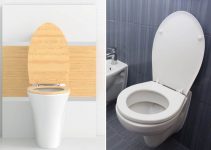
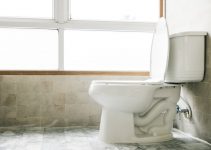
![Are Toilet Tanks Universal? [Don’t Waste Your Money!]](https://betterhomepursuits.com/wp-content/uploads/2022/04/are-toilet-tanks-universal-211x150.jpg)